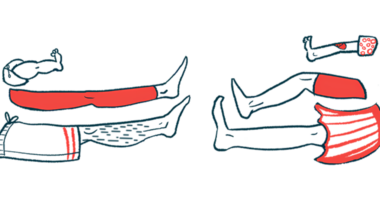Seaweed polyphenols may protect nerve cells, ease symptoms
Ecklonia cava is a brown seaweed rich in phlorotannins

Compounds called polyphenols in the Ecklonia cava seaweed eased motor and nonmotor symptoms in a mouse model of Parkinson’s disease, a study reports.
Treatment with the polyphenols, which are natural antioxidants and anti-inflammatory agents, also prevented the loss of dopamine-producing neurons, a hallmark of Parkinson’s disease. The benefits are linked with the activation of the AMPK protein, which is involved in the response to oxidative stress, a type of cell damage driven by reactive oxygen species, within nerve cells, lab studies suggest.
“This study suggests that Ecklonia cava antioxidants may reduce neuronal damage by AMPK activation and inhibiting intracellular reactive oxygen species production,” Akiko Kojima-Yuasa, PhD, professor at the Osaka Metropolitan University, in Japan, and the study’s lead author, said in a university press release. “It is hoped that Ecklonia cava will be an effective ingredient in the prevention of Parkinson’s disease.” The study, “Ecklonia cava Polyphenols Have a Preventive Effect on Parkinson’s Disease through the Activation of the Nrf2-ARE Pathway,” was published in Nutrients.
In Parkinson’s dopamine-producing nerve cells are lost in the substantia nigra, a brain region that regulates movement. Dopamine is a chemical messenger that enables nerve cells to communicate with each other. Oxidative stress is a known driver of dopamine-producing death. Ecklonia cava is a brown seaweed rich in phlorotannin, a polyphenol on brown algae. Researchers in Japan sought to determine whether polyphenols exerted neuroprotective effects in in vitro (lab) tests with cell models along with a mouse model of Parkinson’s disease.
Rotenone, a pesticide known to inhibit the function of mitochondria, which are structures responsible for energy production in cells, and to induce oxidative stress, was used to cause Parkinson’s-like damage in mice.
Benefits of seaweed polyphenol in Parkinson’s
In a cell model of Parkinson’s disease, results first showed that treatment with Ecklonia cava polyphenol (ECP) rescued cell survival and reduced the production of reactive oxygen species after rotenone was administered.
In further experiments, ECP increased the activity of NQO1, a key antioxidant enzyme, in cells exposed to rotenone.
Nrf2 is a transcription factor, a specific type of protein that turns genes on and off in cells, that’s important for fighting oxidative stress. Nrf2 moves to the cell nucleus and activates the antioxidant response element (ARE), a DNA sequence found in many activated antioxidant genes.
In rotenone-exposed cells, the presence of Nrf2 in the nucleus was only slightly increased compared with untreated, control cells. However, a marked increase in nuclear Nrf2 was seen in cells exposed to rotenone and polyphenols compared with cells treated with rotenone alone. The researchers also saw a significant increase in the activity of a gene target of Nrf2, which codes for the p62 protein.
Next, results showed the AMPK enzyme is key for the protective effects of ECP. Using a blocker of the enzyme suppressed the boost in cell survival seen with the polyphenols.
Feeding seaweed to Parkinson’s mice
Finally, the researchers evaluated whether the polyphenols eased motor symptoms in a mouse model of Parkinson’s using the pole and wire-hang motor tests. The pole test evaluates slow movement by analyzing how long mice take to turn around and reach the ground when placed on a pole, while the wire-hang test of muscle strength assesses how long mice can hold on to a wire.
Mice treated with polyphenols performed significantly better on the pole test than those given rotenone alone. A trend supporting the benefits of polyphenols also was observed in the wire-hang test.
These benefits were accompanied by an increase in nerve cells positive for tyrosine hydroxylase (TH), a marker for dopaminergic nerve cells, in the substantia nigra of mice given polyphenols after rotenone. In fact, levels of TH-positive nerve cells were close to those of normal, control mice.
Nonmotor symptoms may occur years before Parkinson’s motor problems. ECP also induced a trend toward restoring intestinal function in animals given rotenone, on top of motor symptom gains.
The “study demonstrates that ECP exerts neuroprotective effects via the Nrf2-ARE pathway in an in vitro experimental system and offers protection against [Parkinson’s disease] in an [animal] model,” wrote the researchers, who said more research is needed to better “elucidate the detailed mechanisms of ECP action in both in vitro and in vivo systems to facilitate its practical application.”







